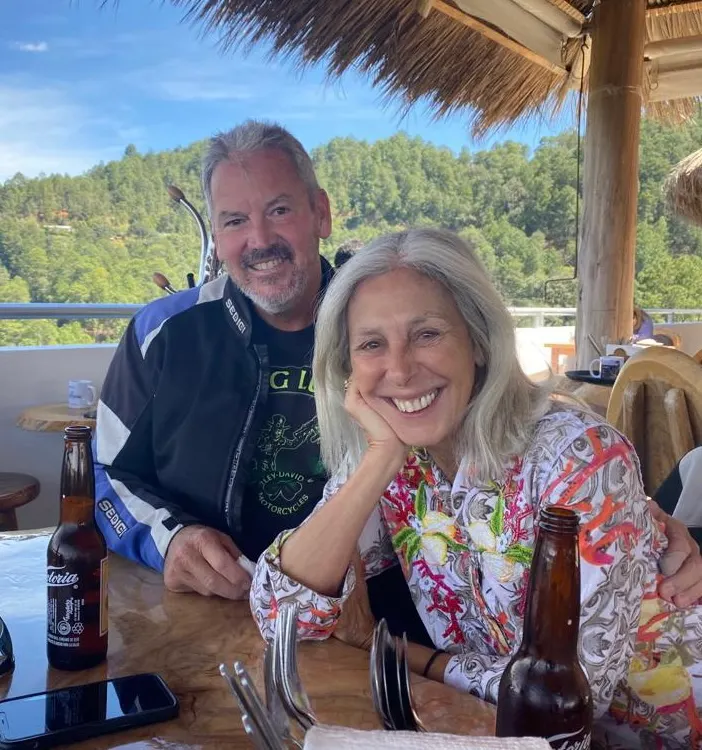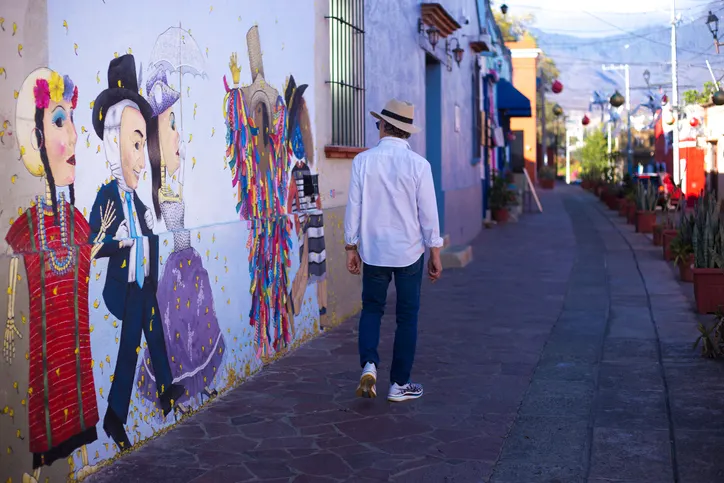Eight months ago, my partner Gary and I departed from Denver on our BMW motorcycle to the city of Oaxaca, Mexico, with the intention of making it our new hometown.
We’d made previous motorcycle trips throughout Mexico—touching down in some 30-plus cities, towns, and villages. Here’s why Oaxaca kept calling our name. It’s far enough south to have a warm, temperate climate, yet with a 5,000-foot elevation, it’s rarely humid.
Another brownie point: the architecture. The ornate buildings in the city center are an eclectic mix of pre-Hispanic features combined with colonial Spanish design. For a big city, it gives off a neighborhood feel. It’s walkable and has access to everything we need. And then there’s the food. Oaxaca rightfully deserves its title as "the gastronomic center of Mexico."
Get Your Free Mexico Report Today!
Get Your Free Mexico Report Today!
Learn more about Mexico and other countries in our daily postcard e-letter. Simply enter your email address below and we’ll send you a free special report – Mexico: The Perfect Close-to-Home Retirement Haven.

By submitting your email address, you will receive a free subscription to IL Postcards, Overseas Dream Home, The Untourist Daily and special offers from International Living and our affiliates. You can unsubscribe at any time, and we encourage you to read more about our Privacy Policy.
How We Found the Right Neighborhood: Airbnb

We got our temporary residency paperwork started at the Mexican consulate before leaving Denver. Then we spent a few extra days at the Texas border to legally import our motorcycle. (Truth be told, there was a bit of anxiety watching the importer load our bike onto a pick-up truck, promising to return with the completed legal paperwork.)
We knew we needed to nail down a neighborhood to live in, so we decided to rent a different place every two months. As inconvenient as it was (remember, everything gets packed on the moto), it was a necessary part of the process.
Our Airbnbs have cost us between $1,200 and $1,500 a month. Crucially, we visited the properties before committing. We’ve found Airbnb listings are not always a true depiction of cleanliness, how tiny that patio space really is, and tend not to warn us about the wild dogs roaming the neighborhood.
Many neighborhoods offered large properties and modern homes, but those weren’t as walkable as we wanted; we’d need to have a car, or be willing to use the bus as our primary form of transportation.
We liked Jalatlaco, a colorful neighborhood a 10-minute walk from centro, but we ended up choosing Xochimilco (pronounced zo-chee-meelco). It’s an older neighborhood with colonial style homes, cobblestone streets, lots of outdoor murals, and also within walking distance of centro.
A Rich Community of Indigenous and Modern Lifestyles

In Oaxaca, we visit new restaurants every week. We love the variety here, ranging from gourmet Oaxacan, to , to every ethnic cuisine you can imagine. It’s just as cheap for us to eat at our favorite torta (sandwich) truck or get chicken and yellow mole empanadas from a street vendor as it is to cook at home.
We’re also able to take day trips on the bike to nearby villages. There’s a Sunday motorcycle riding club, but we prefer to ride with just one or two other bikers or go solo. Visiting a nearby village in a smaller group allows us to have a more intimate experience with locals.
The surrounding region is populated with indigenous people living ancestral lifestyles. Zapotec women wear long braids and traditional, colorful dresses. Whether working a loom or selling tortillas at the market (which they make at 3 a.m. each morning), the villagers are some of the most industrious, hardworking people I’ve ever met. They speak Zapotec, a tonal American Indian language. (From them I learned to say "chichi-bay-oh," when raising a glass to cheer.)
If you’re into textiles or pottery, you’ll especially love it here. I did a 10-day homestay with a weaving family in Teotitlan del Valle—working on a 150-year-old loom is way harder than it seems.
Though I initially organized it for Spanish language immersion, it became a cultural immersion with people that are now my best friends.
Speaking of language—we’ve been in Spanish classes for seven months and it’s tougher than we’d imagined. Though we can get along just fine with directions, shopping, and ordering food, we’re not yet having in-depth discussions with locals. To sharpen their Spanish, expats and snowbirds alike know to head to the Oaxaca Lending Library, which on offers language exchanges on Saturday mornings. The Library also offers tours, lectures, and educational programs, and manages Oaxacaevents.com, a one-stop calendar for town activities.
That’s one of the best aspects of life here: creating a varied social circle. We have Mexican friends in their 20s and 30s who invite us to their parents’ homes (that would never happen in the US). A group of Canadian guys in their 40s invite us to beer tastings. A lovely Mexican couple sitting near us in a restaurant invited us to their home. And the cop who stopped us on the street asked to practice his English with us, and now we know his family.
We’ve been amazed at the warm welcome and enjoy these cross-generational friends, along with American expats with whom we talk motorcycles and house renovations.
The Key to Expat Happiness
One of the drawbacks of living here: Everyone living in Oaxaca currently faces a water shortage. Many areas of Mexico, including Mexico City, deal with this as well. Oaxacan homes receive city water on a limited basis, so one must pay for additional water deliveries from private companies as backup. We use a bucket in the shower to catch extra as it’s heating up, then use it to water the plants—ditto our dishwashing water.
Certainly, there are inconveniences here that my Type-A personality wouldn’t be too willing to accept back in the US. But somehow, I’ve acquired a go-with-the-flow attitude. That’s the key to a satisfying and happy relocation.
Get Your Free Mexico Report Today!
Get Your Free Mexico Report Today!
Learn more about Mexico and other countries in our daily postcard e-letter. Simply enter your email address below and we’ll send you a free special report – Mexico: The Perfect Close-to-Home Retirement Haven.

By submitting your email address, you will receive a free subscription to IL Postcards, Overseas Dream Home, The Untourist Daily and special offers from International Living and our affiliates. You can unsubscribe at any time, and we encourage you to read more about our Privacy Policy.
